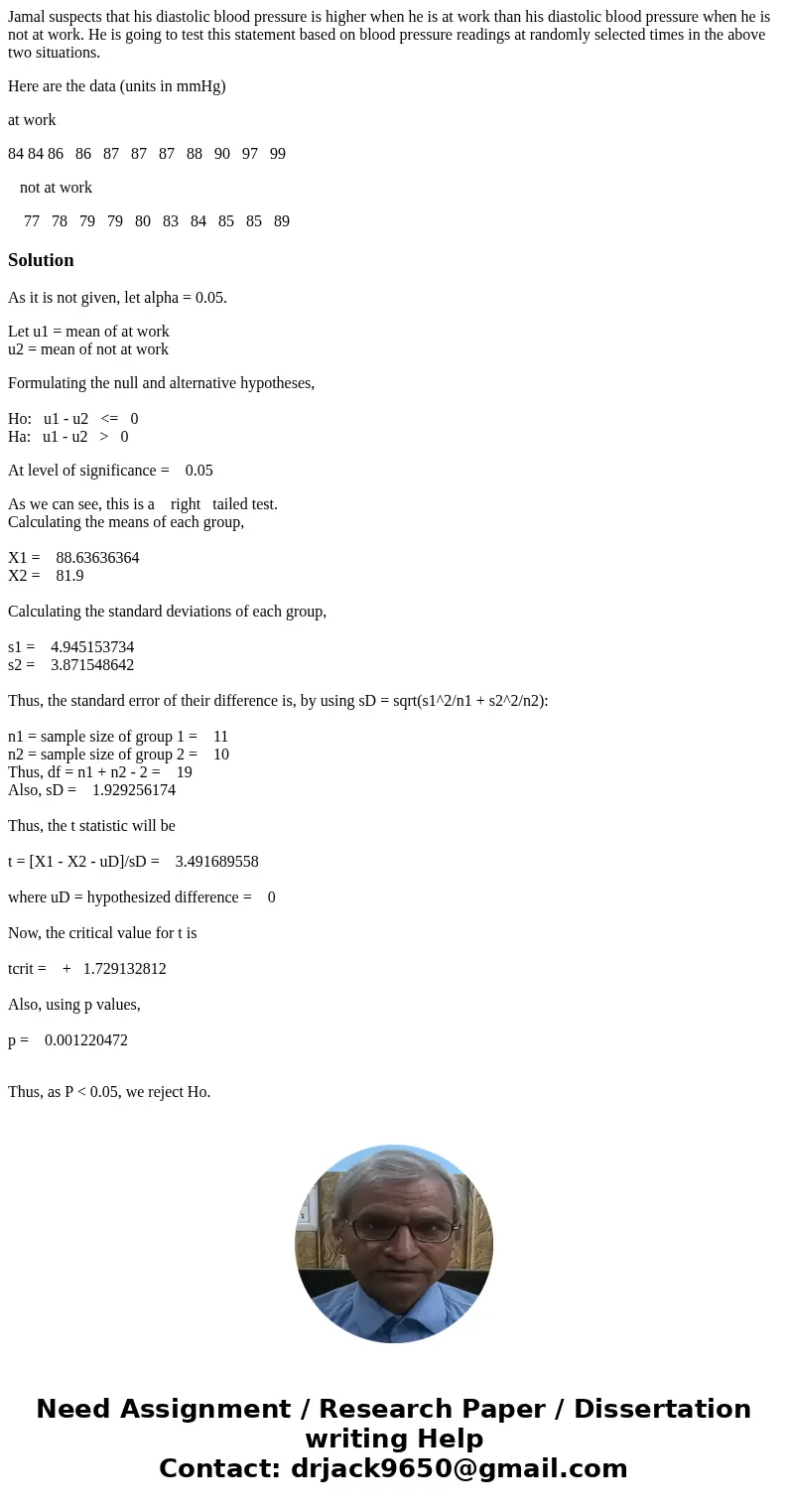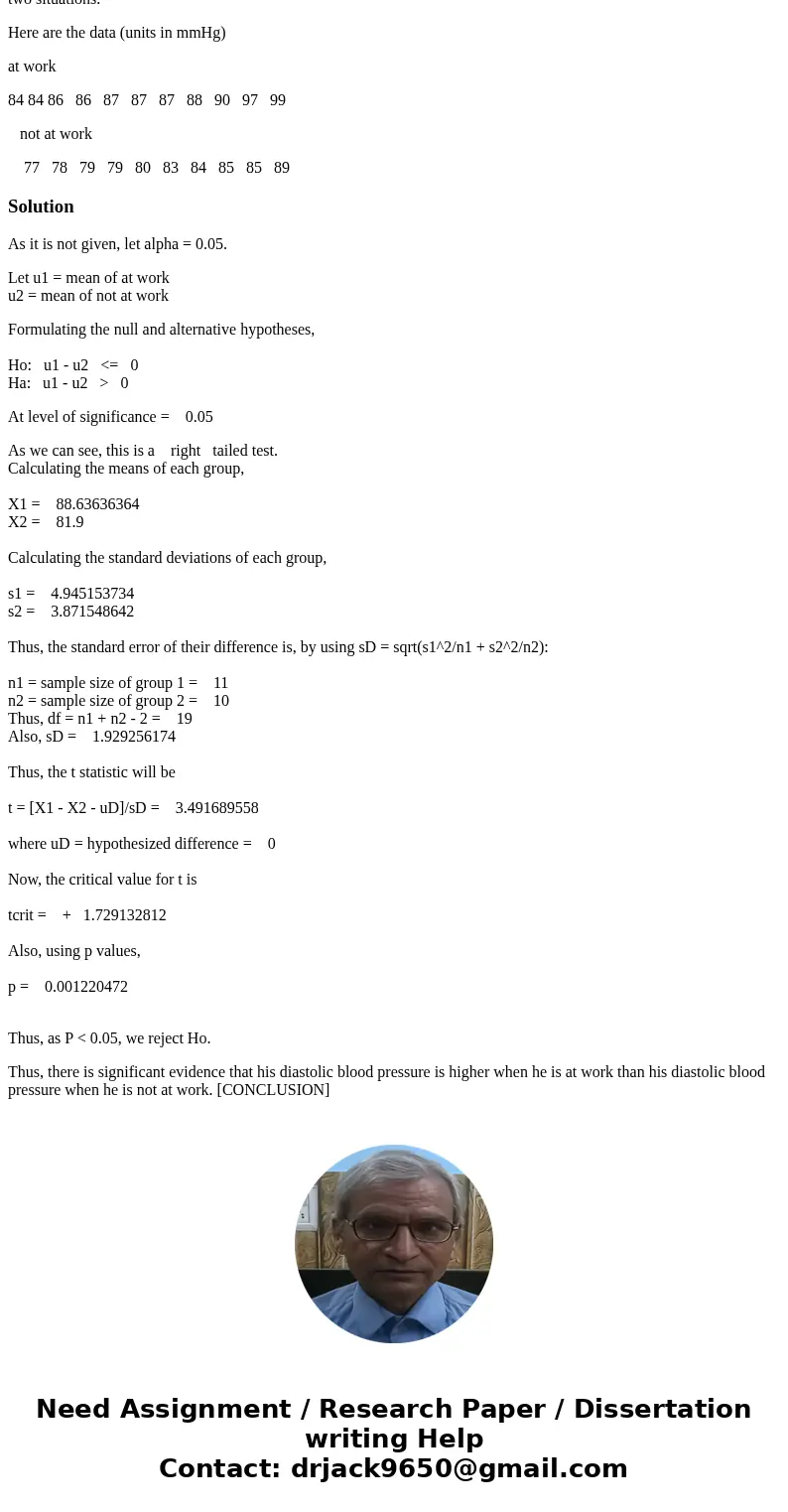Jamal suspects that his diastolic blood pressure is higher w
Jamal suspects that his diastolic blood pressure is higher when he is at work than his diastolic blood pressure when he is not at work. He is going to test this statement based on blood pressure readings at randomly selected times in the above two situations.
Here are the data (units in mmHg)
at work
84 84 86 86 87 87 87 88 90 97 99
not at work
77 78 79 79 80 83 84 85 85 89
Solution
As it is not given, let alpha = 0.05.
Let u1 = mean of at work
u2 = mean of not at work
Formulating the null and alternative hypotheses,
Ho: u1 - u2 <= 0
Ha: u1 - u2 > 0
At level of significance = 0.05
As we can see, this is a right tailed test.
Calculating the means of each group,
X1 = 88.63636364
X2 = 81.9
Calculating the standard deviations of each group,
s1 = 4.945153734
s2 = 3.871548642
Thus, the standard error of their difference is, by using sD = sqrt(s1^2/n1 + s2^2/n2):
n1 = sample size of group 1 = 11
n2 = sample size of group 2 = 10
Thus, df = n1 + n2 - 2 = 19
Also, sD = 1.929256174
Thus, the t statistic will be
t = [X1 - X2 - uD]/sD = 3.491689558
where uD = hypothesized difference = 0
Now, the critical value for t is
tcrit = + 1.729132812
Also, using p values,
p = 0.001220472
Thus, as P < 0.05, we reject Ho.
Thus, there is significant evidence that his diastolic blood pressure is higher when he is at work than his diastolic blood pressure when he is not at work. [CONCLUSION]


 Homework Sourse
Homework Sourse